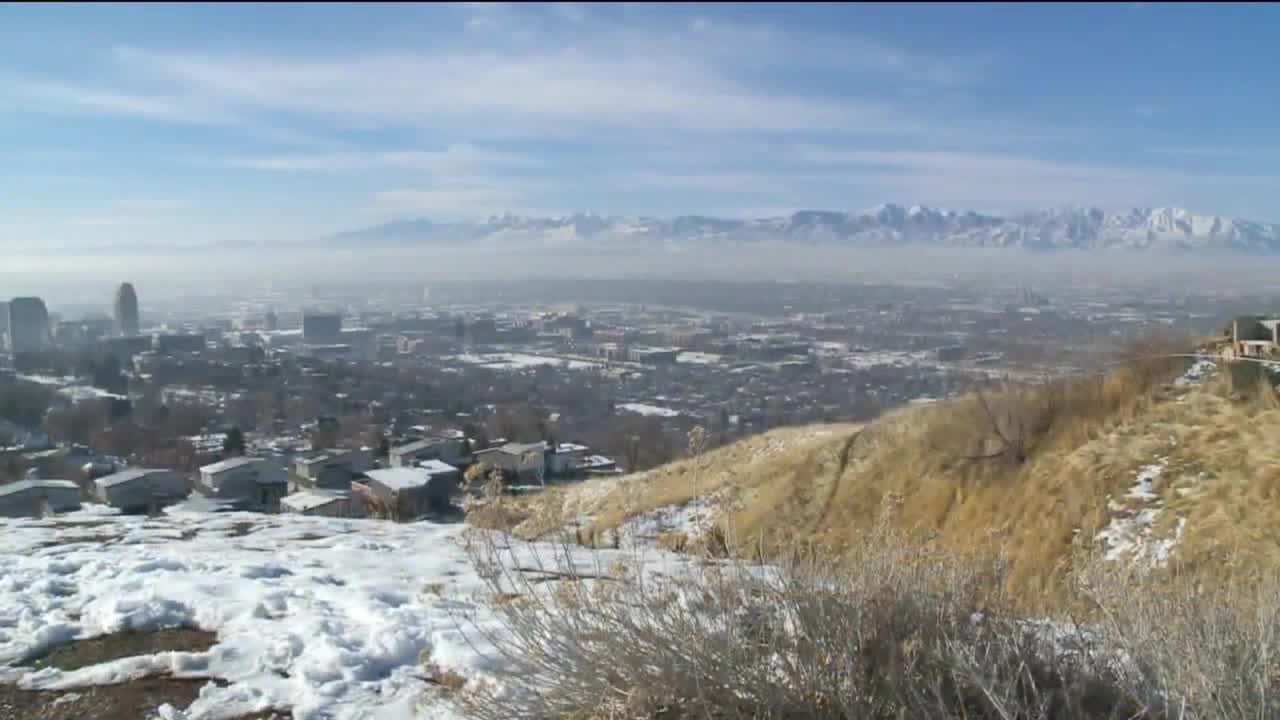The fog and smog around this weekend in Salt Lake City is a reminder of our air quality issues over the past few decades in this area.
This past week, the Environmental Protection Agency announced a major milestone for Provo and Salt Lake City. Still, doctors issue a warning ahead of the upcoming inversion season.
"We haven't solved our air pollution problems by any means. And in fact, we need to be very leery," said Dr. Brian Moench, president of Utah Physicians for a Healthy Environment.
After 15 years on the EPA's non-attainment list, Salt Lake City and Provo now meet federal standards for fine particulate matter, or PM 2.5. The EPA made the announcement last week, marking a significant environmental milestone for the Wasatch Front.
"The medical literature is very clear: there's no safe level of air pollution you can be exposed to," Moench said.
This weekend's air pollution captured Sunday on FOX 13's weather cameras showed moderate levels, but even that can cause problems.

"Research shows smoking one cigarette a day is virtually half as much risk as smoking an entire pack," Moench said. "In other words, the first few additions of air pollution to the community airshed are having the greatest impact. So everyone should look at the whole situation here with air pollution on the Wasatch Front, as we should always strive for as clean air as we can get."
University of Utah atmospheric sciences professor Kevin Perry acknowledges the progress while emphasizing continued vigilance.
"The air quality in Salt Lake City has actually gotten much better over the last 20 years, and people are just more aware of pollution now and more aware of the linkages between air pollution and human health," Perry said.
Perry confirms that those health linkages are serious.
"Being exposed to pollution, and in the wintertime, we're mostly talking about particulate matter, particles in the air that when you breathe, end up in your nose, and your throat and your lungs, and that can lead to exacerbations of asthma, chronic bronchitis, can even lead to cardiovascular problems like heart attack and stroke and premature death," Perry said.
The EPA's attainment designation came after the region avoided violations for three consecutive years.
"They've been working on that for the last few years, and for the last three years, they haven't had any violations of the standards, and that has then led to the EPA to say that you're now in attainment," Perry said.
However, Moench cautions that federal standards don't tell the complete health story.
"There's always a gap between what the health community wants for air quality standards and what we eventually get from the EPA. Some kind of standards are better than no standards, but people need to understand that there are limits to what those standards can tell us in terms of whether or not there's a public health problem still," Moench said.
The region's geography continues to present challenges during winter months.
"We always have to be diligent," Perry said. "We live in an area where the meteorological conditions basically are poor for air quality. During the wintertime, that cold air settles in the bottom of the valley and it traps all of our local pollutants."
Individual actions have contributed to the improvement, including switching to electric vehicles and other conservation methods.
"One of the ways that we've actually gotten to the attainment status was the improvements in the efficiency of vehicles. We use less fuel per mile than we have in the past," Perry said.
The state has invested in cleaner transit, vehicle upgrades and public education. Despite this progress, experts advise continued vigilance.
"Generally, winter inversions are a little less severe than they've been in previous years," Moench said.
But Moench says that improvement is being offset by longer wildfire seasons and more dangerous wood smoke in the air, along with higher ozone levels and the shrinking of the Great Salt Lake, which could lead to toxic dust.
"There's no safe level of air pollution, and so people need to take as much proactive, protective actions as possible," Moench said.
Recommended protective measures include using air purifiers in your home, avoiding exercise outdoors during poor air quality days, and limiting the use of gas stoves indoors.
"Do everything you can to protect yourself and the rest of the community," Moench said.




